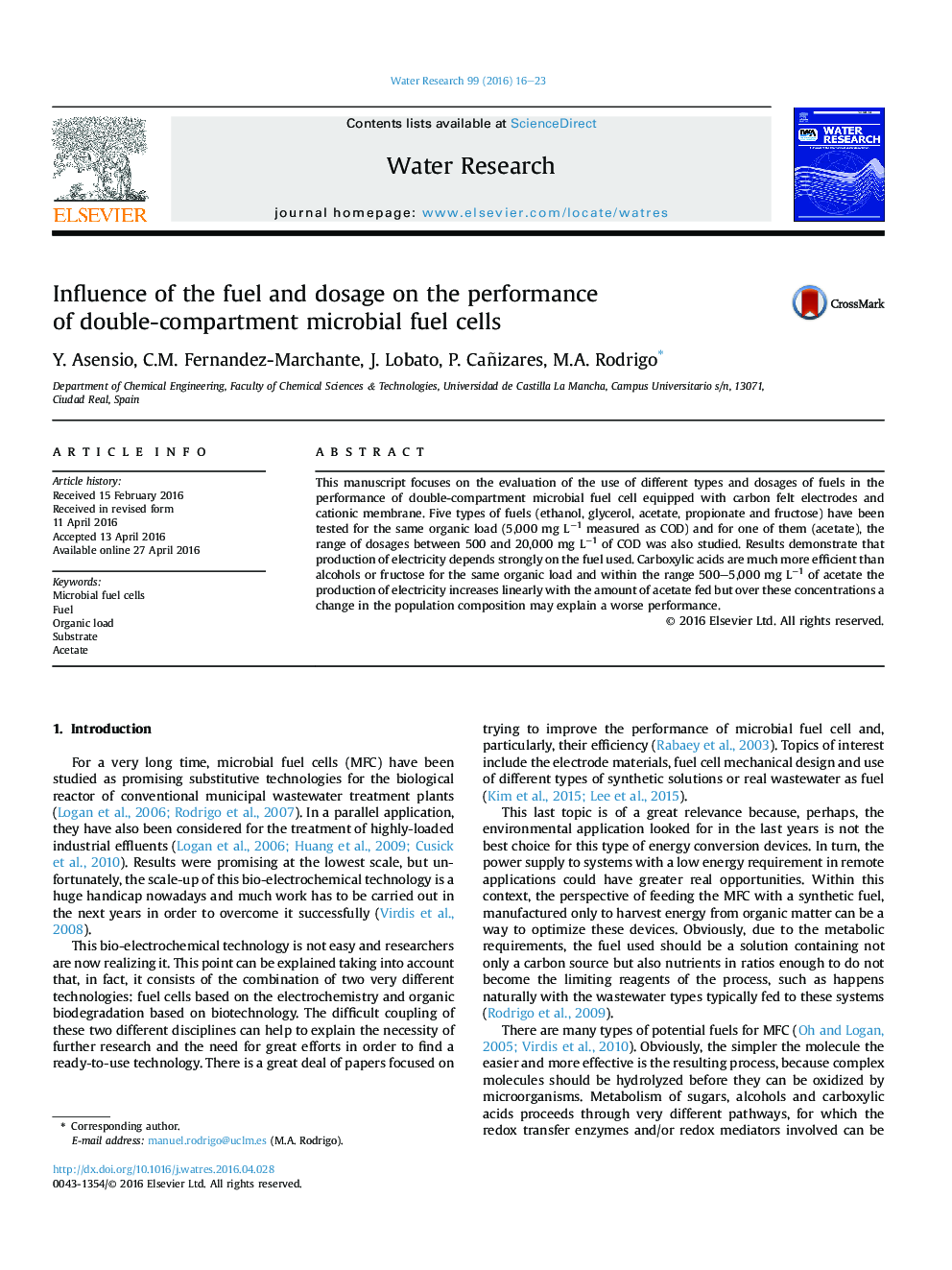| Article ID | Journal | Published Year | Pages | File Type |
|---|---|---|---|---|
| 6364936 | Water Research | 2016 | 8 Pages |
â¢Production of electricity increases linearly with COD in the range 500-5,000 ppm.â¢Carboxylic acids are more efficient fuels for the production of electricity than alcohols.â¢Fructose behaves as a very low-efficient fuel for MFC.â¢Maximum power density attainable in the range 20-500 mW mâ2 depending on the composition of fuel.â¢Propionic acid are slightly more efficient than acetic acid as fuel.
This manuscript focuses on the evaluation of the use of different types and dosages of fuels in the performance of double-compartment microbial fuel cell equipped with carbon felt electrodes and cationic membrane. Five types of fuels (ethanol, glycerol, acetate, propionate and fructose) have been tested for the same organic load (5,000 mg Lâ1 measured as COD) and for one of them (acetate), the range of dosages between 500 and 20,000 mg Lâ1 of COD was also studied. Results demonstrate that production of electricity depends strongly on the fuel used. Carboxylic acids are much more efficient than alcohols or fructose for the same organic load and within the range 500-5,000 mg Lâ1 of acetate the production of electricity increases linearly with the amount of acetate fed but over these concentrations a change in the population composition may explain a worse performance.
